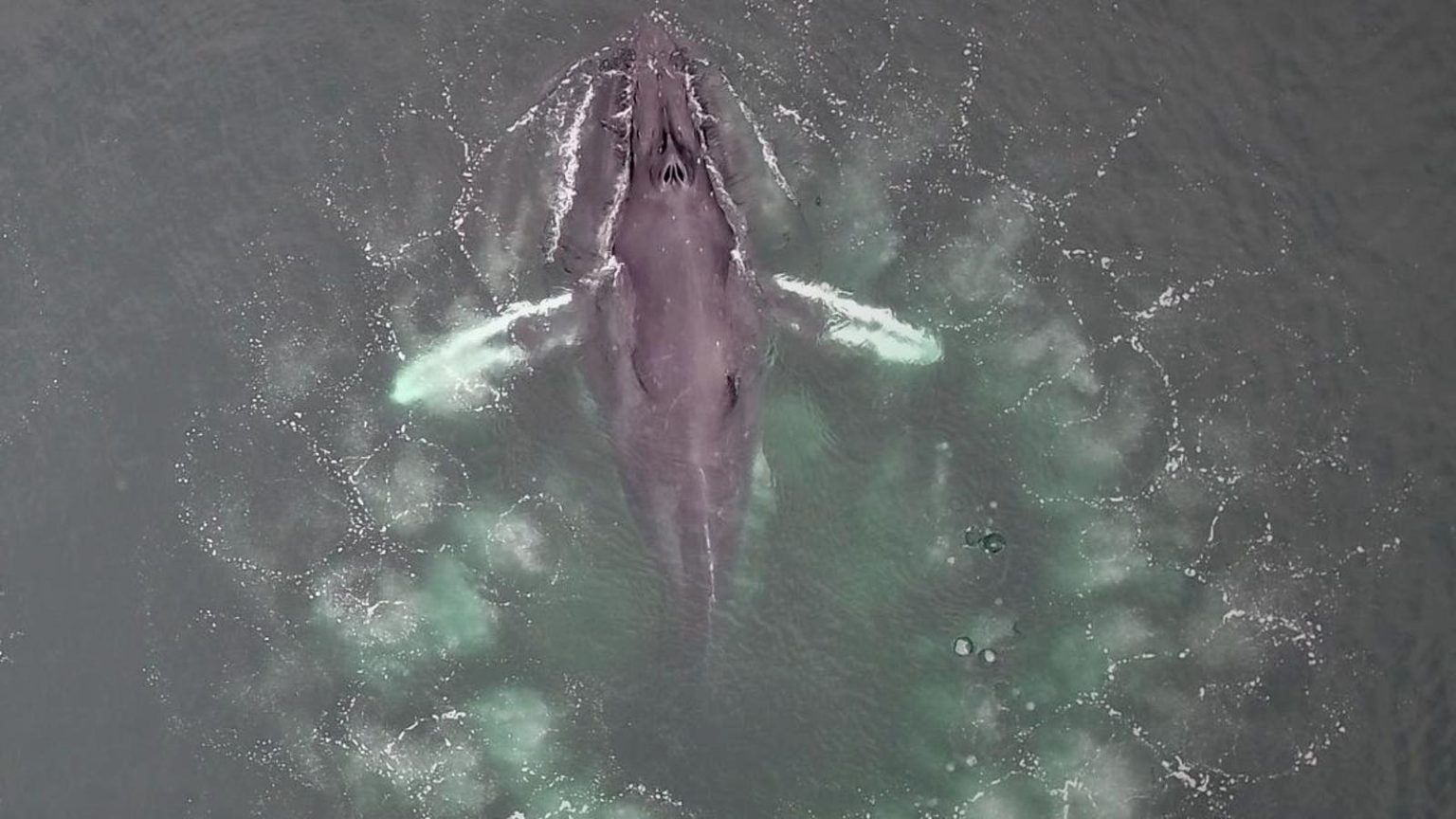It isn’t common for non-human animals to use tools. New research suggests that humpback whales engage in an even rarer behavior: creating tools for hunting. The paper, published in Royal Society Open Science, documents how whales blow bubbles to create nets to trap krill.
To be considered tool usage, animals must use an object not attached to their body in order to manipulate their environment. Animals ranging from chimpanzees and elephants to fish and insects have been known to use tools, but it is an uncommon skill. Even less common is tool manufacturing.
“Unlike something the animal finds in its environment, for example a stick for poking into holes to get bugs, these animals are actually crafting and manufacturing and modifying these tools and creating optimal tools for specific environments,” said Andy Szabo, director of the Alaska Whale Foundation and first author on the paper.
This is far from the first time that bubble nets have been documented. In particular, much has been written about humpback whales working together to hunt fish.
But Szabo said this paper, which focused on solo whales hunting krill, is unique because the scientists used new tools to take a deep-dive (literally) into whale behavior. By deploying underwater cameras on animal tags and aerial cameras on drones, researchers were able to see the exact structure of the bubble nets and the precise actions of the whales.
Humpback whales hunt krill using rings of bubble nets, according to the paper. Although the krill are physically capable of swimming through the bubbles, they are reluctant to cross through them. Szabo said this might be because of the visual barrier the bubbles create, but said this aspect of the nets is not fully understood.
As the nets get smaller and smaller, the groups of krill get denser and denser. On average, the paper found that the whales increased krill density seven times by using the nets. This means a whale must take many fewer mouthfuls to eat, explained Szabo.
The humpback whales also appeared to be learning from one another through observation. Szabo said whales are not born blowing bubble nets. Rather, they learn how to do it by practicing and by watching other whales. There is no evidence that the whales are intentionally teaching others.
“They know they can blow bubbles and I think just through trial and error a whale sooner or later learns a new trick, and if they are successful and they can improve upon it then they’ll continue to use it,” said Szabo. “Other individuals in the area are watching what’s going on with the whale that is blowing a bubble net and doing pretty well, and they’re probably going to pick that up as well.” He said there were at least 70 whales within two miles of the researchers’ boat that were all creating bubble whales in the same way.
But whales didn’t just learn from one another, they stole from each other as well. Some of the solo-hunters appeared to be taking prey out of other whales’ nets.
“What we did see was on a number of occasions a whale would be making a bubble net and another whale would bust through and take a mouthful of krill,” said Szabo, who said that behavior was not included in the data set.
Whales whose nets fail sometimes appear frustrated, said Szabo. He said that when whales work together to hunt herring, it is not uncommon for them to abort a net and rise to the surface looking “agitated.”
What does agitation look like in a whale? Szabo said they begin to make wheezing, frustrated sounds before diving down to try again.
The new paper provides great insight into bubble net feeding, said Olaf Meynecke, manager and researcher at the Whales and Climate research program at Griffith University in Australia. Meynecke was not involved with the new paper.
“The study shows that the humpback whales have developed a method to capture prey, very likely shared this knowledge with others, refined the method and have likely done so over a relatively short time frame,” said Meynecke
He said that whales have an outstanding ability to adapt and have demonstrated impressive behavior in other areas as well, including research which suggests that they can develop complex communication and cultural transmission of information.
Read the full article here





